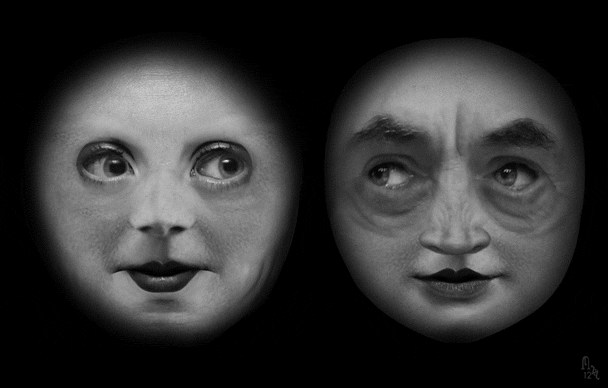A planetary alignment occurs when planets in our solar system line up in a relatively straight line from the perspective of Earth. This phenomenon can involve two or more planets, and while they may appear close together in the night sky, they are often millions or even billions of miles apart in space. The alignment can be a stunning visual spectacle, captivating stargazers and astronomers alike.
You might find it fascinating to know that these alignments can happen in various configurations, such as conjunctions, where two planets appear very close to each other, or more extended alignments involving several planets. The beauty of a planetary alignment lies not only in its visual appeal but also in the intricate dance of celestial mechanics that makes it possible. The planets orbit the Sun at different distances and speeds, and their positions change continuously.
When their orbits bring them into alignment from our viewpoint on Earth, it creates a moment of cosmic harmony that can be both awe-inspiring and humbling. As you gaze up at the night sky during such an event, you may feel a connection to the vast universe and the forces that govern it.
Key Takeaways
- A planetary alignment occurs when several planets appear to line up in the sky from the perspective of Earth.
- Planetary alignments are relatively rare, with some occurring only once every few decades or even centuries.
- The best time to watch a planetary alignment is during the early morning or evening hours, and the best location is away from city lights for optimal viewing conditions.
- During a planetary alignment, observers can expect to see the planets appear close together in the sky, creating a stunning celestial spectacle.
- The science behind planetary alignments involves the gravitational forces and orbits of the planets, which can have a significant impact on Earth and other celestial bodies.
How Rare is this Planetary Alignment?
Planetary alignments are relatively rare events, especially those involving multiple planets. While you might see a conjunction of two planets several times a year, alignments involving three or more planets can occur only once every few years or even decades. The rarity of these events is due to the unique orbital paths and speeds of each planet.
For instance, while Mercury completes its orbit around the Sun in just 88 days, Jupiter takes nearly 12 years to do so. This difference in orbital periods means that the planets do not align frequently. When you consider the vastness of our solar system and the varying distances between planets, it becomes clear why these alignments are special.
The last significant alignment might have occurred years ago, and you may have missed it if you weren’t paying attention. As you anticipate the next alignment, it’s essential to appreciate the rarity of such occurrences and the unique opportunity they present for observation and reflection on our place in the cosmos.
When and Where to Watch the Celestial Spectacle

To catch a glimpse of an upcoming planetary alignment, you’ll need to know when and where to look. These events often occur during specific times of the year, and their visibility can depend on your geographical location. For instance, some alignments may be best viewed in the early morning hours just before dawn, while others might be visible in the evening sky after sunset.
You can check astronomical calendars or websites dedicated to celestial events to find out when the next alignment will take place. When planning your viewing experience, consider finding a location with minimal light pollution. Urban areas can obscure your view of the night sky, so heading to a rural area or a designated dark-sky park can enhance your experience significantly.
Bring along a blanket or a reclining chair to make your stargazing more comfortable. As you settle in under the stars, take a moment to appreciate the beauty of the universe unfolding before you.
What to Expect During the Planetary Alignment
| Planet | Alignment Position | Effect |
|---|---|---|
| Mercury | Aligned with the Sun | Increased communication and mental clarity |
| Venus | Aligned with Jupiter | Enhanced love and relationships |
| Mars | Aligned with Saturn | Increased discipline and focus |
| Jupiter | Aligned with Venus | Expansion and growth in all areas of life |
| Saturn | Aligned with Mars | Opportunities for hard work and long-term success |
During a planetary alignment, you can expect to see a stunning display of celestial bodies appearing close together in the night sky.
Depending on which planets are involved, their brightness and colors may vary significantly.
For example, Venus often shines brightly and can be easily spotted even in twilight, while Mars has a reddish hue that sets it apart from other planets.
As you observe these planets aligning, you may notice how they create a visual connection across vast distances. In addition to the visual spectacle, planetary alignments can also evoke a sense of wonder and curiosity about our universe. You might find yourself pondering questions about the nature of these celestial bodies and their significance in our solar system.
This moment can serve as an opportunity for reflection on humanity’s place in the cosmos and our ongoing quest for knowledge about the universe we inhabit.
The Science Behind Planetary Alignments
The science behind planetary alignments is rooted in celestial mechanics, which studies the movements of celestial bodies under the influence of gravitational forces. Each planet follows an elliptical orbit around the Sun, governed by Kepler’s laws of planetary motion. As you delve into this topic, you’ll discover that these laws explain how planets move at varying speeds depending on their distance from the Sun.
When planets align, it’s often due to their relative positions in their orbits at a specific time. For example, if Earth and another planet are on opposite sides of the Sun, they will appear aligned from our perspective. This alignment is not static; it changes as the planets continue their orbits.
Understanding this dynamic nature can deepen your appreciation for these celestial events and highlight the intricate balance of forces at play in our solar system.
Historical Significance of Planetary Alignments

Throughout history, planetary alignments have held significant meaning for various cultures and civilizations. Ancient astronomers meticulously observed these events, often associating them with omens or important societal changes. For instance, during ancient Mesopotamian times, alignments were seen as messages from the gods, influencing decisions made by rulers and leaders.
As you explore this historical context, you’ll find that these celestial events have shaped human understanding of time and space. In more recent history, planetary alignments have also played a role in scientific advancements. The study of these events has contributed to our understanding of gravitational forces and orbital mechanics.
As you reflect on this historical significance, consider how humanity’s fascination with planetary alignments has driven both cultural interpretations and scientific inquiry throughout the ages.
Cultural and Astrological Interpretations of Planetary Alignments
Culturally, planetary alignments have inspired countless myths, legends, and artistic expressions across different societies. Many cultures have woven stories around these celestial events, attributing various meanings to them based on their beliefs and traditions. For example, some Native American tribes viewed planetary alignments as times for renewal and reflection, while others saw them as opportunities for spiritual connection with the cosmos.
Astrologically, planetary alignments are often interpreted as significant influences on human behavior and events on Earth. Astrologers believe that when planets align in specific configurations, they can affect everything from personal relationships to global events. If you’re interested in astrology, you might find it intriguing to explore how different alignments are interpreted based on zodiac signs and astrological houses.
Tips for Viewing and Photographing the Planetary Alignment
To make the most of your experience during a planetary alignment, consider some practical tips for viewing and photographing this celestial event. First and foremost, ensure that you have access to clear skies free from clouds or obstructions. Check weather forecasts leading up to the event to choose an optimal viewing night.
When it comes to photography, using a tripod is essential for capturing sharp images during low-light conditions. A camera with manual settings will allow you to adjust exposure times and ISO levels for better results. If you’re using a smartphone, consider downloading apps that help you track celestial bodies and provide tips for astrophotography.
As you prepare for this celestial spectacle, remember to take your time and enjoy the moment. Whether you’re observing with friends or family or simply soaking it all in alone, allow yourself to be captivated by the beauty of the universe unfolding before your eyes. This experience can serve as a reminder of our connection to something much larger than ourselves—a cosmic dance that has been occurring for billions of years.
In conclusion, planetary alignments are not just astronomical events; they are moments that invite us to reflect on our place in the universe and appreciate the beauty of celestial mechanics at work. By understanding what they are, how rare they are, when to watch them, what to expect during these events, their scientific basis, historical significance, cultural interpretations, and practical tips for viewing and photographing them, you can fully immerse yourself in this extraordinary experience when it occurs next.
There has been much discussion about the upcoming planetary alignment in 2023, but one interesting article to check out is “Why is the Moon so far out of bounds in 2023?”. This article delves into the unique positioning of the Moon during this time and how it may impact astrological readings. For more insights on astrology in 2023, be sure to also read the October 2023 newsletter and discover the astrologer of the month for December 2023.
FAQs
What is planetary alignment?
Planetary alignment refers to the phenomenon where multiple planets in our solar system appear to line up in a straight line as seen from Earth.
How often does planetary alignment occur?
Planetary alignment is a rare occurrence and does not happen frequently. The last significant planetary alignment occurred in 1982, and the next one is not expected until 2854.
What causes planetary alignment?
Planetary alignment is caused by the relative positions of the planets in their orbits around the Sun. While the planets do not actually line up in space, their positions as seen from Earth can create the illusion of alignment.
Can planetary alignment have any effects on Earth?
There is no scientific evidence to support the idea that planetary alignment has any significant effects on Earth. It is largely considered a visual phenomenon with no direct impact on our planet.
Can planetary alignment be seen with the naked eye?
Yes, planetary alignment can be seen with the naked eye, provided that the planets involved are visible from Earth at the time of alignment. However, the alignment may not always be easily noticeable without the aid of a telescope or binoculars.




